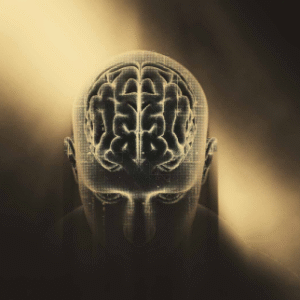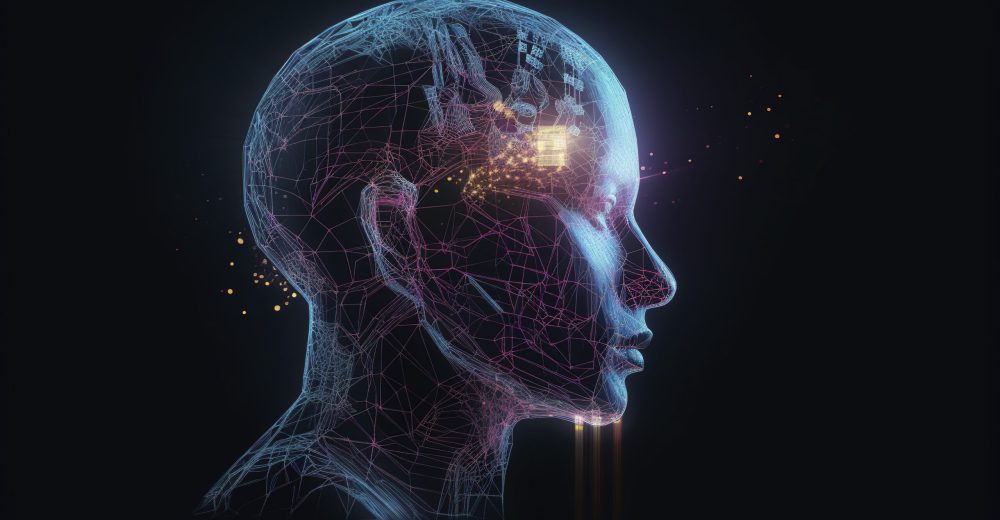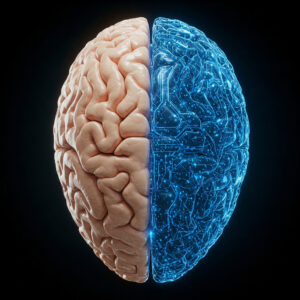Human vs AI : The Hidden Power of Data Analytics in Decision Making
Share Now:
Data has become a foundational element in driving strategic decisions across sectors such as business, healthcare, education, and public policy. Organizations increasingly depend on data not just for monitoring performance but for anticipating change and shaping long-term outcomes. This growing dependence has propelled the rise of data analytics—a field that combines statistical techniques, domain knowledge, and modern computing technologies to extract meaningful patterns and insights from large datasets.As artificial intelligence (AI) becomes more embedded in organizational processes, it enhances data analytics by offering unmatched speed, precision, and scalability in analyzing complex information.

Shruti Gupta
Data Analyst
The Human Brain in Decision-Making

The Human Brain in Decision-Making Human desion-making is a thoughtful and often complex process. Individuals don’t rely solely on facts; they also draw from past experiences, personal values, and e motions.
For instance, a business leader might not choose a supplier solely based on price but because of a long-standing relationship built on trust. Similarly, teachers adapt their methods to suit each student, guided by empathy and subtle observations that a machine couldeasily miss. Emotions serve as a compass, pointing individuals toward what matters most to them and what aligns with their values .However, human judgment isn’t perfect. People can make mistakes, especially when emotions cloud their thinking or when they rely too heavily on recent events or familiar patterns.
In fast-paced or stressful situations, it’s easy to feel overwhelmed, as the human brain has a limited capacity for processing information at any given time. This limitationbecomes most apparent under stress, where decision making can shift from deliberate analysis to intuitive, and sometimes biased, responses . In such scenarios, technology can assist by handling large volumes of information, thereby supporting more balanced and informed decisions.
Data-Driven Decisions: The Power of AI

Data-Driven Decisions: The Power of AI Artificial Intelligence (AI) is transforming how we process and interpret information. Unlike humans, AI systems can analyze vast datasets rapidly, uncovering patterns and trends that might not be immediately apparent. This capability is particularly valuable in scenarios requiring swift decision-making or when handling data volumes too large or complex for manual analysis. AI’s efficiency stems from its ability to process information without fatigue or emotional interference, maintaining consistent performance even with repetitive or detailed tasks. However, AI is not inherently free from bias. If the data used to train AI models contains errors or reflects existing societal biases, the AI can inadvertently perpetuate and even amplify these issues, leading to unfair outcomes.

Artificial Intelligence (AI) is already making significant impacts across various industries. In the financial sector, AI-powered systems monitor millions of transactions in real time to detect fraudulent activities. These systems analyze transaction data to identify anomalies and flag potentially fraudulent transactions promptly, a task that would be time-consuming for human teams. In the retail industry, companies like Amazon utilize AI to enhance customer experiences. Amazon’s AI-driven recommendation systems analyze customer behavior, such as browsing history, clicks, and purchases, to provide personalized product suggestions. These systems adjust recommendations in real time to accommodate customers’ changing behaviors, leading to more accurate and relevant suggestions.
Case Study: AI vs Human in Medical Diagnosis
One of the clearest demonstrations of AI’s growing influence is in the field of medicine. Traditional medical diagnosis relies heavily on a doctor’s training, experience, and patientinteraction. However, AI systems trained on massive datasets of symptoms, images, and medical histories are showing diagnostic accuracy that rivals, and in some cases exceeds, that of human professionals. Below is a comparison of diagnostic accuracy between AI systems and human doctors in various medical domains: As shown, AI systems have achieved diagnostic accuracy as high as 94% in radiology and 95% in ophthalmology, surpassing or closely matching their human counterparts. This does not suggest replacing doctors, but rather augmenting their abilities with faster, data-informed decision support tools.
The Mechanics of Decision-Making: Human vs AI
Human decision-making relies heavily on judgment, context, and emotional evaluation. AI, on the other hand, makes decisions based on probability, logic, and historical data patterns. When we compare both along several critical dimensions, clear distinctions emerge.
While AI dominates in areas like speed, scalability, and resistance to fatigue, humans continue to lead in empathy, contextual understanding, and moral reasoning. This indicates not a rivalry but a potential.
Human + AI: The Future of Decision-Making
The most effective decision-making frameworks are not human-only or AI-only, but a combination of both commonly known as augmented analytics. In this model, AI performs the heavy lifting in data processing and pattern recognition, while humans apply judgment, ethics, and creativity. Consider a real-world scenario in customer service: AI chatbots can handle routine queries instantly, but when a frustrated customer needs nuanced support, a human agent takes over. Similarly, in marketing, AI can forecast campaign performance, but creative strategy remains a human strength. The power of this hybrid model becomes clearer when we evaluate it across business KPIs like return on investment, customer satisfaction, and error reduction:
The hybrid approach consistently outperforms both human-only and AI-only methods. For example, while AI alone boosts decision speed and reduces errors significantly. It is the human-AI collaboration that achieves the highest customer satisfaction and ROI.
Ethical Implications and Challenges

While Artificial Intelligence has opened up exciting possibilities for faster and smarter decisions, it also brings serious ethical and social concerns. One major issue is Fairness. If an AI system is trained on biased or incomplete data, it can make unfair choices. For example, a hiring tool might unfairly reject qualified candidates from minority groups simply because it learned from past hiring patterns that favored certain backgrounds. This can quietly reinforce discrimination, even when there’s no bad intent involved.
For example, a hiring tool might unfairly reject qualified candidates from minority groups simply because it learned from past hiring patterns that favored certain backgrounds. This can quietly reinforce discrimination, even when there’s no bad intent involved.
Another concern is Accountability. If an AI system makes a harmful decision—like denying a loan or recommending the wrong medical treatment—it’s often unclear who is to blame: the developer, the user, or the company that deployed it. This lack of clarity can make it difficult to take responsibility or seek justice.
Transparency is also a big challenge. Some AI models, especially complex ones, work in ways that even their creators can’t fully explain. This can create a “black box” problem, where decisions are made without clear reasoning. When people don’t understand how or why a decision was made, it becomes harder to trust the system. To handle these challenges, it’s important for organizations to make AI systems more understandable, check them regularly for bias, and keep human oversight in place, especially when lives, rights, or opportunities are involved.
Conclusion

The growing use of Artificial Intelligence and data analytics doesn’t mean that human judgment is becoming less important. Instead, it marks the beginning of a new kind of partnership. Machines can sort through huge amounts of data and find patterns that might go unnoticed,but they still need human input to make sense of the bigger picture.
People bring qualities like empathy, ethics, creativity, and common sense—things that data alone can’t provide. The real strength of data analytics lies in its ability to support and enhance human thinking, not replace it. When used wisely, AI can take care of the heavy data lifting, allowing people to focus on the decisions that need deeper understanding and care. This balance becomes especially important in areas like healthcare, education, business, and justice, where the consequences of decisions go far beyond numbers. Looking ahead, the most effective systems won’t rely on humans or AI alone. They will combine the best of both—using technology to process information quickly and humans to make thoughtful, fair, and meaningful choices. This collaboration is where the true power of modern decision-making lies.
Embrace the Power of Data
Lead with Empathy and Ethics.


